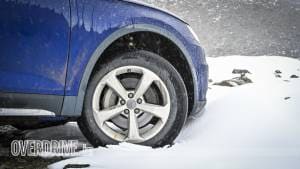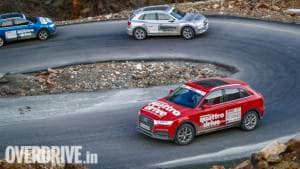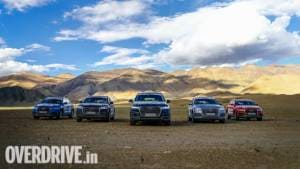Independence quattro Drive 2019: Union Territory
Seven years ago, I started a small movement that would take my team at OVERDRIVE and some very special cars from our partners in crime, Audi, on a journey deep into Ladakh. Accompanying us on this journey would be a few privileged participants, who would get the opportunity to experience first-hand the process of content creation. The intent was to raise the flag at strategic places along the Indian border, considering we shared them with not entirely friendly neighbours. This was a very civil act of sticking a pole to them, a pole that held the Indian national flag at the upper end and a bunch of patriotic adventurers, exploring the northern borders of the nation, holding up the other.
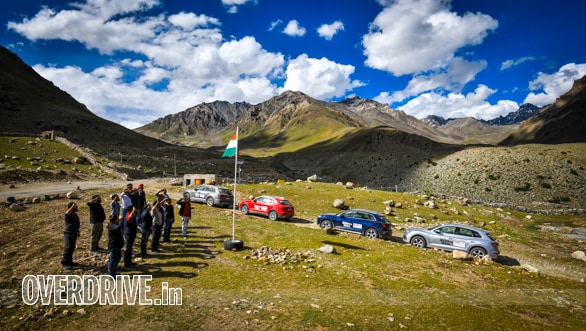
In 2019, a whole new bunch of crazies jumped on to the Independence quattro bandwagon. Most from the south of India, while some others joined in from various other states of the country. Over the years, the diaspora of our little adventure community has encompassed the diversity of India. I love how the thrill of a good road trip makes ordinary individuals come together as compadres, amigos, bros! A road trip, in Ladakh especially, brings out the best in each other, aiding, abetting, bonding together like the world has no tomorrow! It elevates every Independence quattro Drive to a special place!
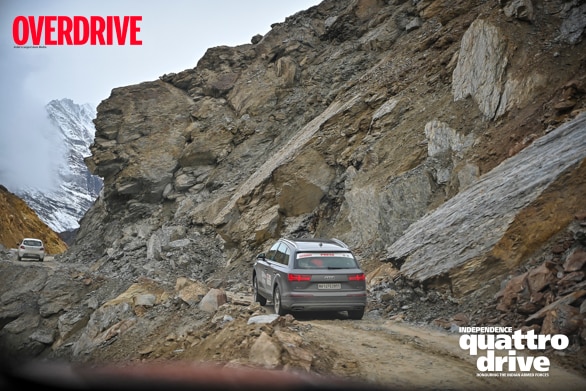
Our destination this year was the little known Batalik sector. Batalik received very little coverage during the entire war, with good reason. Getting to the lofty heights around this sector meant an arduous 18-hour trek spread over three days amidst shelling for the reporting media. It was easier to simply drive to Kargil and Drass and bring frontline stories from there. So in a sense Batalik, despite having some of the hardest battles fought there during the Kargil War did not get its due in the mainstream media.
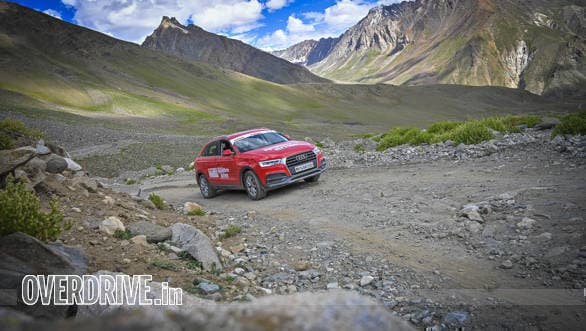
Batalik is also known for the Brokpa tribe. The people belonging to this tribe reside in four villages in the Batalik sector namely, Dah, Hanu, Garkon and Darchak. The Brokpa's are believed to be direct descendants of Alexander the Great's soldiers and it is said that they have pure Aryan blood running through their veins. What is immediately apparent is that the people in this region certainly have much sharper features than anyone else in India. Dazzling coloured eyes, prominent noses, high cheekbones, broad foreheads, large palms, tall and imposing, that's the men. I'm not even going to begin describing the women, said to be the most heart-achingly beautiful in all of India. It's true! But we weren't here to examine the demographics of the region, we were here to plant the Indian national flag on our Independence Day. And to do that we selected a site at roughly around 12,000 feet above sea level, very close to the Chorbat La, a high altitude pass that sits at around 16,866ft above sea level and connects Ladakh to Baltistan in Pakistan.
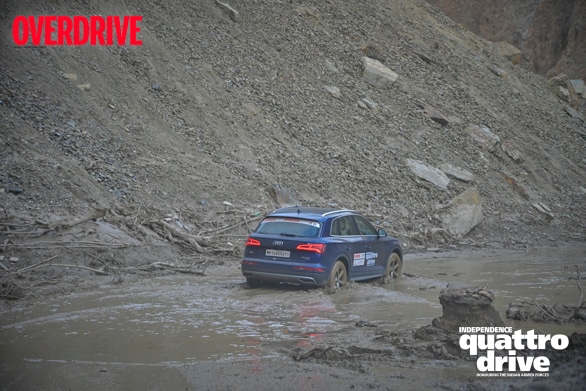
The road leading up to the pass is treacherous, but we had selected a portion of it that gave us a clear sight of the Karakoram mountain range. The drive up to this point took us past the villages of Yogma Hanu and Goma Hanu or lower and upper Hanu villages respectively. These days the road is reasonably well-paved well past Goma Hanu, courtesy the GREF. En route, the IQD contingent first stopped off at Yogma Hanu, a small poor village with a population of around 1,200 souls. Yogma Hanu is an insipid village, one that you would easily skip if you were travelling in these parts. Yet it holds a relic of unimaginable value. Yogam Hanu is home to a 9th century fort built by the locals to repel Balti raiders. For centuries the fort lay in a dilapidated condition, even though the villagers did reside till recently in its many rooms without fully realising its worth.
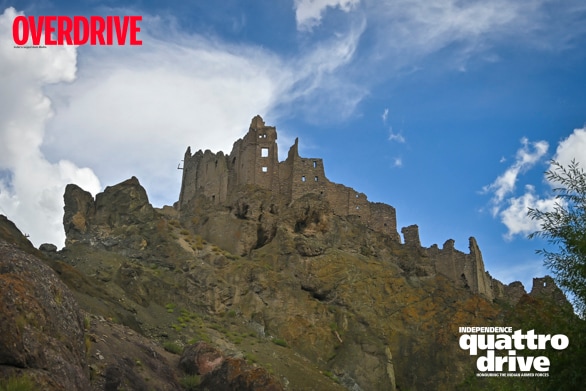
From the outside, the fort does not look like much these days but once inside, you can appreciate the intricacy and cleverness with which it must have been built. There are around 40 rooms, spread over several levels. Residents were housed based on their economic status, the dredges of society at the lowest levels with the headman and other such wealthier families on the higher levels. The poor barely had a single room to accommodate everyone, whereas the headman's residence is more lavish with living space for wild stock, separate bedchambers, kitchens, prayer room, an open to the skies meeting or lounge area and even a dispensary.

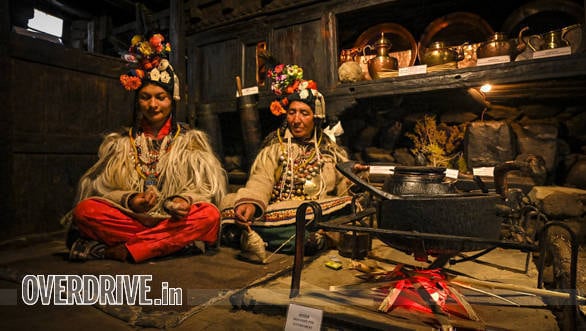
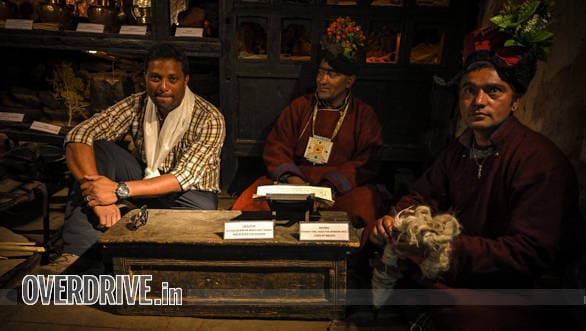
The passageways through the fort were built in a manner so as to dissuade invaders. Claustrophobic with low roofs and narrow walls, they barely permit more than a single file of individuals to move around standing straight up. This bolstered defences, similar to the entryways to the houses which were also low and narrow. Once inside the residences, however, the space increases significantly and the locals could easily stand inside.
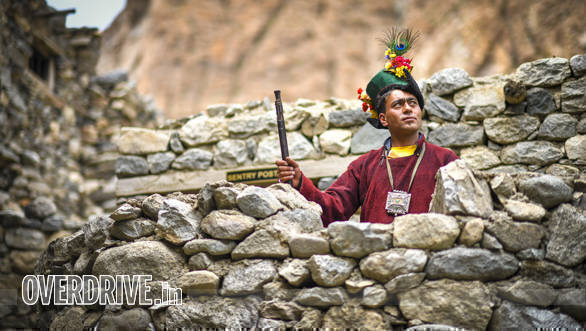
Most of the structure is still standing, thanks to the efforts of the army stationed at the location who have spent the last two to three years restoring the fort. During the course of resurrecting the fort, several artefacts were discovered which are now displayed within the fort. Centuries-old utensils, jewellery, arms and ammunition, saddles, whips, looms etc were all discovered rotting away. These were carefully restored and are now preserved within glass cabinets albeit with access for tourists to examine them. The cloying environs, the dark subterranean pathways, the marvellous architecture, it all makes for one intense tour. Certainly a must visit if you are travelling in this region.
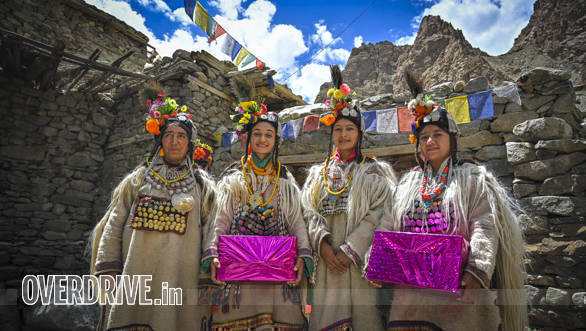
The village folk had, in the meantime, also put on an exhaustive routine for us, as a special gesture. This included a drill march, exercises, cultural dances etc. And we also had the unique opportunity of hoisting the Indian national flag with them. It was a moment of great pride, standing there amidst people of a region who recently received Union Territory status and were now professing their solidarity towards the nation even more strongly than ever before.
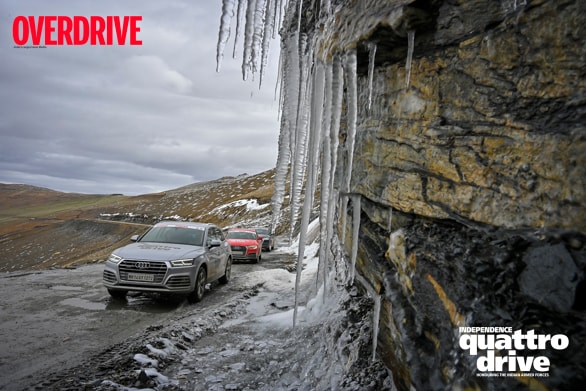
The Independence quattro drive couldn't have gotten better than this. Seven years ago when we started this project, we wouldn't have ever thought of standing this close to the border with a community that seems so distant from the mainland and yet maintains such close ties to the spirit of India. It gave me as much pride as the rest of the participants to stand there and hoist the national flag, singing the national anthem yet again with gusto in an exotic destination with people who took unequivocal pleasure in being Indian. I don't think I need to be reminded to do this again in 2020!
quattro Power
Audi India has consistently been encouraging us in this exercise for the last seven years. Not only have they supported us with their range of SUVs, but they have also backed us up with service support and a whole lot of encouragement to keep alive this spirit of adventure. We often take for granted that these German SUVs are more attuned for the city, and that they might very well be. Yet each of these SUVs that we have driven, the Q3, Q5 and the Q7 have shown character way beyond measure in these parts of the country.

Bear in mind that the region in the north of Himachal and through Ladakh is as inhospitable as it gets. The high altitude desert is known for its treacherous roads, high altitude passes, unpredictable weather, mountain sickness and a desolation far beyond imagination. And yet, it is also the most spectacularly scenic region in all of India. Towering mountains, deep valleys, vast flatlands, mighty rivers and snow-covered peaks all glistening amidst some of the cleanest air to have touched your lungs, make it one of the most alluring regions to travel to. It has invited travellers of all sorts and to date remains the ultimate adventure destination for those looking for the road trip of a lifetime.
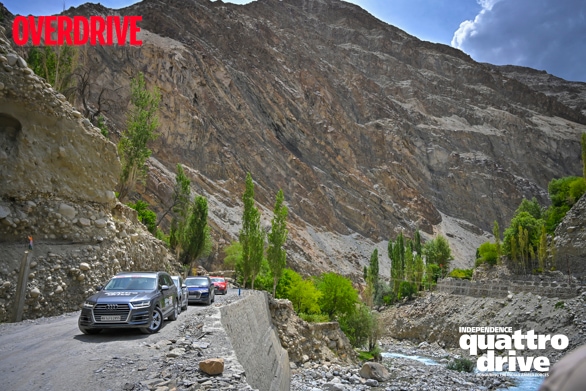
So heading out into this region means taking along a set of wheels that is capable and sturdy. The Audis bring more than that, they bring comfort and luxury, speed and performance and dynamics that makes this drive quite special. Over the years, the roads built by the Border Roads Organisation have consistently been getting better.
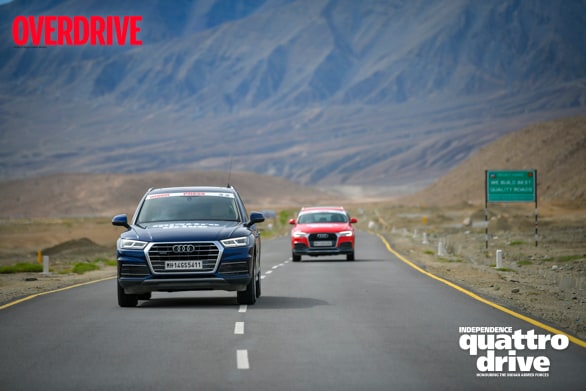
These roads have been built to provide rapid deployment of troops and artillery to the borders, so almost 80 per cent of the roads through Ladakh today are superbly paved. Some sections are still, however, a constant battle with the environment. Landslides, heavy snowfall in winters and torrid glacial melt in summers keeps dislodging these alignments, it is never an easy journey.
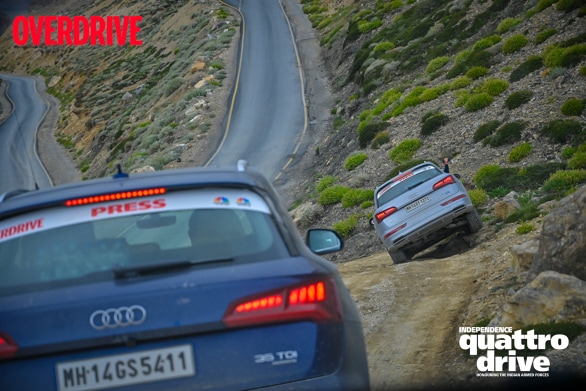
In these conditions, the Audis face just as much of a challenge as the participants. Low oxygen levels leads to the cars running fuel-rich mixtures. The very fine dust clogs the filters. Extremely rough sections can sometimes challenge the underbody of these SUVs as well. There is a lot of battering that these SUVs bear and yet they hold the fort, the Q3 still nimbly navigates these paths while the Q5 and the Q7 regally carry their passengers in quietude. This year has been no different, and just like the participants are fed a dose of oxygen, Diamox and Disprin to cope with the altitude, the SUVs are nursed and cared for as they tirelessly and effortlessly continue to make their way, every year, into new areas. More power to Audi for making such capable steeds!
Also read,
Independence quattro Drive 2019: The chariots of choice
Independence quattro Drive 2019: The preparation
Also see:
Independence Quattro Drive 2019 in association with Audi
